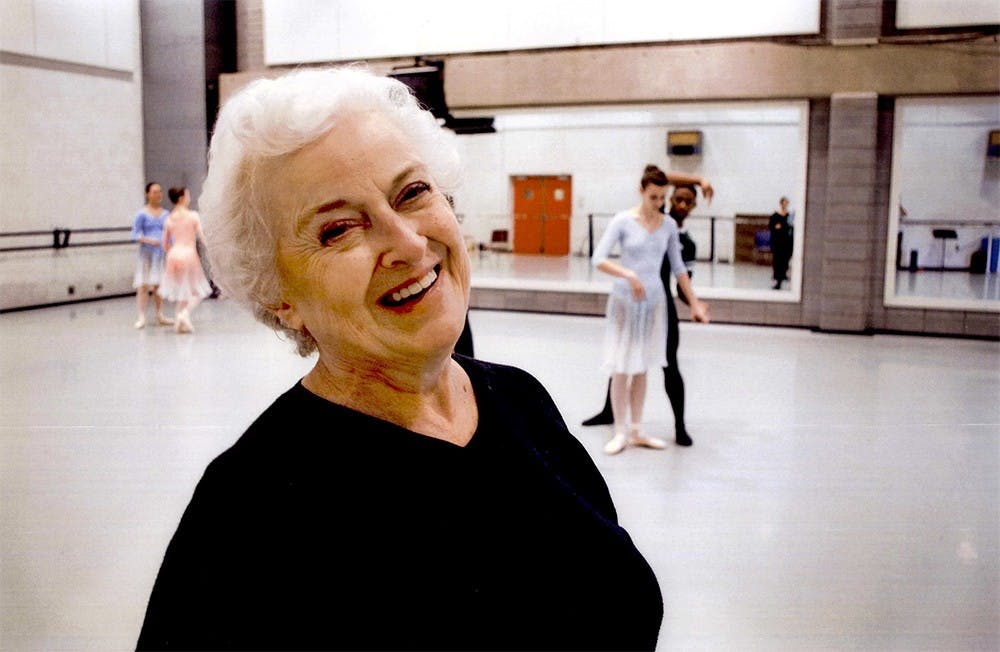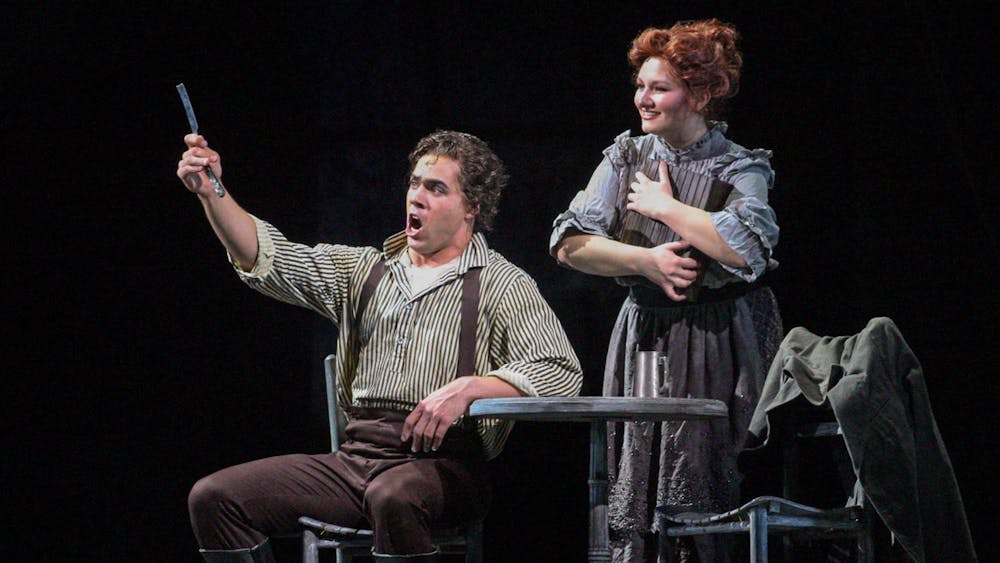Violette Verdy wore the same red dancing shoes with a small heel every day.
Several times a week for 20 years, a taxi or a friend drove Verdy, who died Feb. 8 at the age of 82, from her condo in Bloomington to IU’s campus. She had never learned to drive.
With her red shoes, tights that showed off legs still lithe in her 70s and 80s, and often a shawl around her shoulders, Verdy would spend the day working as a coach for ballet students at the Jacobs School of Music.
She was the kind of person who lived her life for others, said Robin Allen, her assistant of more than 10 years. She brought out the best in other people, exuded optimism and had a genuine wish for others’ success.
Everyone felt like they were someone special when they were with Verdy, especially her students, Allen said.
“She empowered you to go do it, and she always knew you could do it,” Allen said. “She gave them love and then they loved themselves. You wanted to work for it because she helped you love life.”
Junior Cara Hansvick, who performed the role of the Sugarplum Fairy in “The Nutcracker,” was one of Verdy’s students.
“Sometimes studios are freezing, and if someone is standing on the side in the second cast not dancing, she would go and give them her shawl if they looked cold,” Hansvick said.“That was the kind of person she was.”
Verdy’s love for life and dance was apparent to anyone who saw her, Hansvick said.
“You could even see it in the way she taught,” she said. “She was just this ray of sunshine that spread out through the whole room.”
In “Violette Verdy: The Artist Teacher,” a 2009 film about her time teaching at the Chautauqua Institution in New York, Verdy said her first awareness of movement was through music. She was mad about it, and had to move to it.
Born Nelly Armande Guillerm in 1933 in Pont-l’Abbé in Brittany, France, Verdy’s ballet studies began at the age of eight. Her stage career began in 1945 and lasted until she retired in 1976.
In the film, under curled hair gone white, Verdy has the same big, open eyes and charming smile as in the pictures that flash across the video screen from her performing days.
“I might not have any children of my own, but oh, did I have a lot of little dancing children,” Verdy said in the film. “I love them, I do.”
She loved people who loved to dance, Michael Vernon, Jacobs’ ballet department chair, said. Even in her 80s, she related to young students, and he could tell she was very happy at IU.
Verdy’s legacy will be carried on by the many dancers that learned from her, Vernon said..
She taught around the world, directed and coached at the Paris Opera Ballet and the Boston Ballet, and scouted talent for George Balanchine’s New York City Ballet after being one of his prized dancers for 20 years.
“I think that her tricks and corrections and lessons will live on through the teachers that we have here and through us,” Hansvick said. “And as we go on, we’ll pass those on to other people. I don’t think she’ll ever be gone. We have a piece of her now.”
When Hansvick, Allison Perhach and Raffaella Stroik were being coached by Verdy to be the Sugarplum Fairies, she explained to them the Sugarplum’s role in the story in relation to the main character Clara. They all still remember her words.
“The Sugarplum is the ideal woman for Clara — it’s exactly what Clara is aspiring to be,” Perhach said. “She told us we need to embody that in the way that we dance. That’s so perfect because that’s exactly what she was to everyone else. She is the ideal woman and the ideal Sugarplum, not only as a dancer but as a person in the way she interacted with us.”
The ballet department will be honoring Verdy’s legacy by performing La Source, a ballet that George Balanchine choreographed specifically for her, in the fall, Vernon said.
“She was famous for her fast footwork, her precision, her personality and her musicality.” Vernon said. “Balanchine choreographed for certain women, and even when they retire you can still see the personality and the technique of that particular person. Violette’s is much like Violette — it’s very bubbly and very musical and fast. It’s sort of effervescent.”
Verdy’s collection of ballet archives, including her old costumes, film, photographs, texts and notes will most likely be stored at Harvard University, Allen said. Fifty boxes, about half of her collection, are already there, and the rest is being catalogued now.
Vernon said walking into her garage was like walking into the Smithsonian, with boxes upon boxes of her collection, and her house was neat but overflowing with papers.
Her collection of ballet history, her unrivaled knowledge and her ability to connect with people were what made her so special, Vernon said. She was a treasure that was invaluable to the University and the ballet world alike.
In “The Artist Teacher,” Verdy said she wanted to be a resource to young students for as long as she could.
“The mission of ballet is the same as for all the arts,” Verdy said in the film. “The mission is to elevate humanity. I feel that I have given myself completely to this form of work.”






